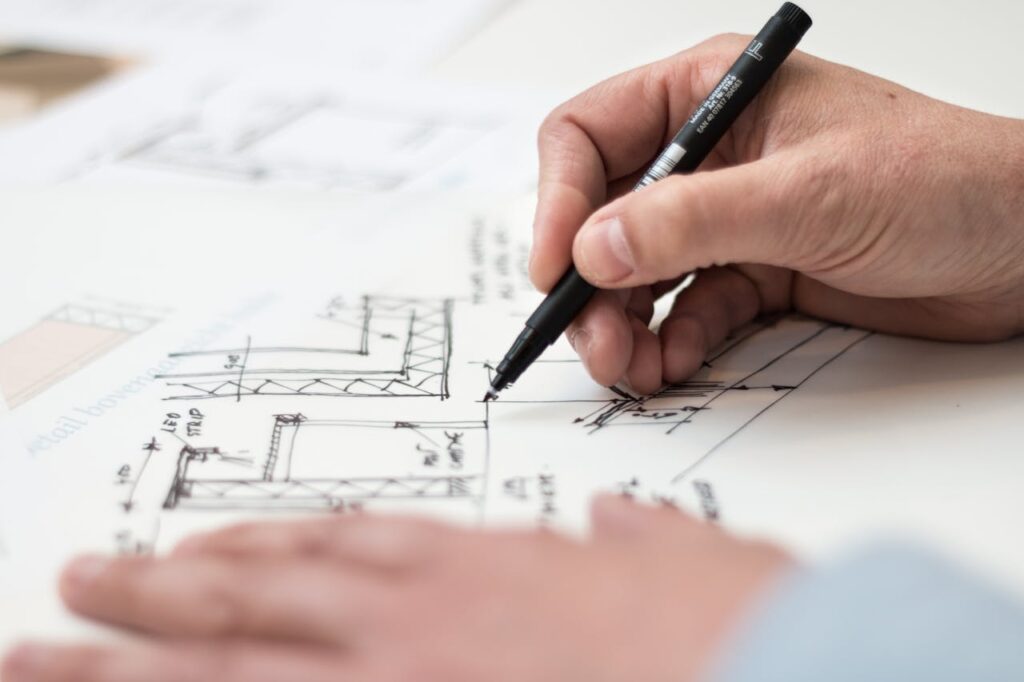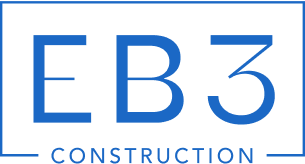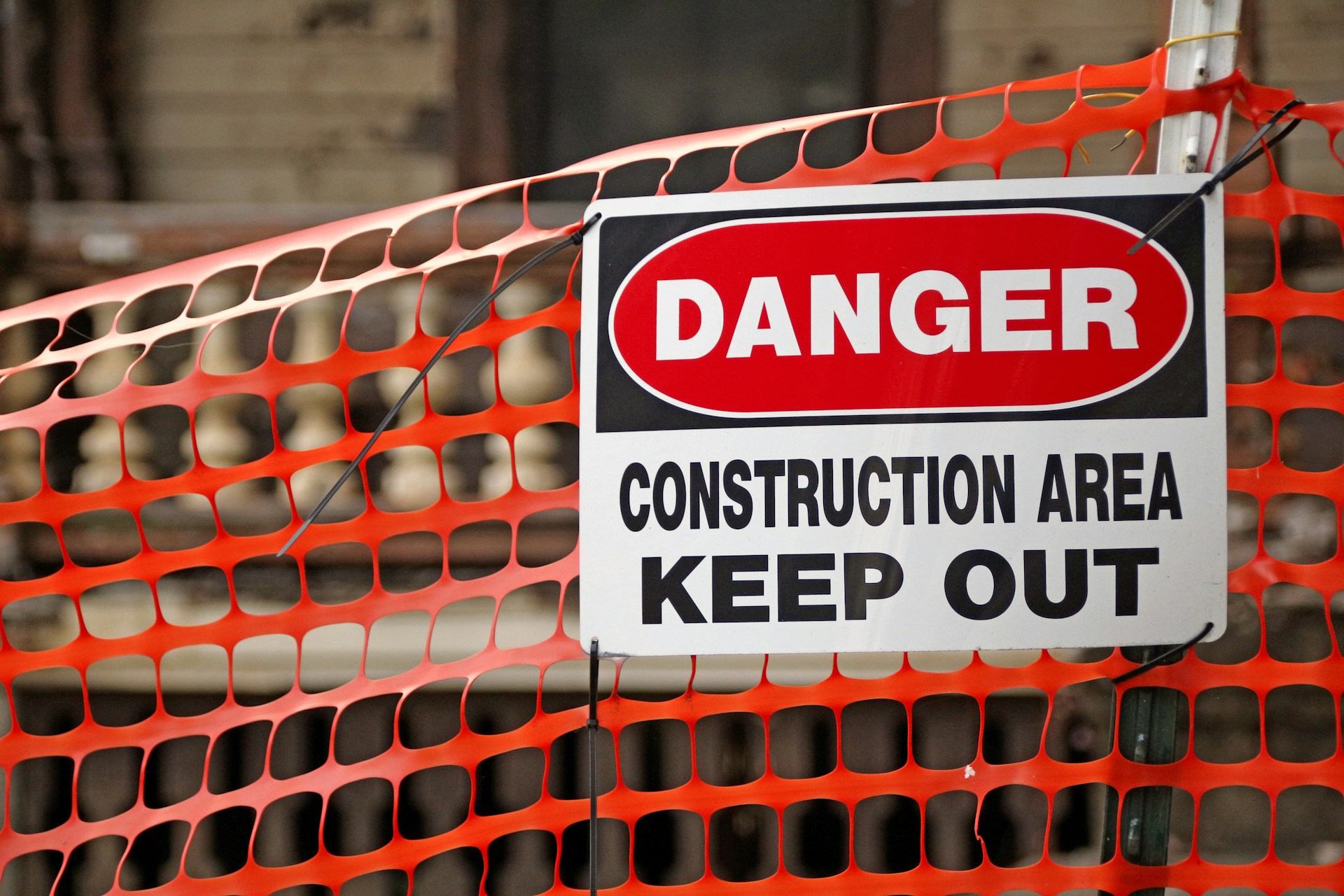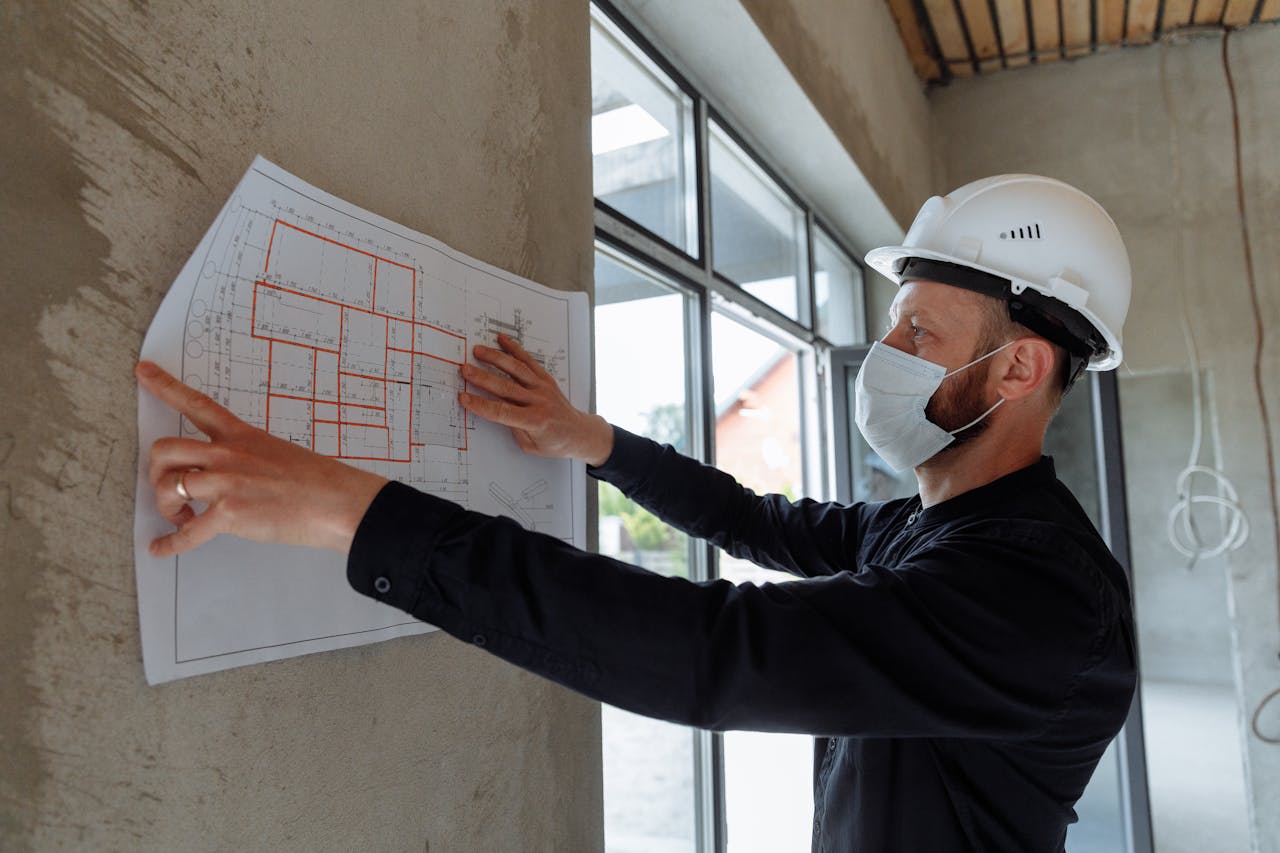Construction margins hover between 3% and 7% nationally, making every dollar of waste a direct hit to profitability. Cost reduction in construction project determines whether we deliver successful builds or watch projects drain resources that could fund future growth.
The benefits extend well beyond protecting our bottom line. Projects completed on budget create satisfied clients who refer new business and approve future work. We also gain competitive advantage in bidding, positioning ourselves to win contracts while maintaining healthy margins. Cost control supports sustainable practices through waste reduction and energy efficiency, often unlocking incentives that further improve project economics.
How Can Early Planning And Design Choices Cut Costs?

Early planning decisions create the foundation for construction cost control. We establish a firm Construction Contract Award Budget during preconstruction and align every design choice against this target. This approach prevents scope creep and ensures team accountability from day one.
Value Engineering At Each Design Phase
We apply value engineering systematically throughout design development. The process examines essential functions, evaluates material alternatives, and identifies opportunities for space optimization. During schematic design, we focus on building size and program efficiency. Design development phases allow for deeper analysis of systems and assemblies.
Value engineering works best when applied early. Research shows the greatest opportunity to impact life cycle costs occurs during programming and conceptual design stages. We can influence 100 percent of project costs during pre-design phases, compared to just 5 percent at construction start.
Constructability Reviews At Project Milestones
We conduct constructability reviews at each design milestone to catch coordination errors before they become change orders. These reviews examine structural connections, MEP routing conflicts, and material sequencing challenges. Early detection of these issues prevents costly field modifications and construction delays.
Our reviews also evaluate construction methods and equipment access. We analyze site constraints, material delivery routes, and temporary facilities placement. This coordination eliminates surprises during construction and maintains project schedule momentum.
Early Risk Identification And Prevention
Soil reports and geotechnical investigations happen before design begins. We identify subsurface conditions, groundwater levels, and bearing capacity early in the process. This data informs foundation design and prevents costly surprises during excavation.
Clear project priorities guide decision-making when trade-offs arise. We establish owner objectives for schedule, quality, and budget flexibility. These priorities help us navigate design challenges and maintain focus on essential project outcomes.
Component Standardization And Cost Control
We standardize building components wherever possible to reduce complexity and cost. Repetitive door types, window sizes, and finish selections streamline procurement and installation. This approach also simplifies maintenance and future renovations.
Our cost breakdown structure tracks expenses by building system and project phase. This detailed accounting reveals where money goes and identifies opportunities for adjustment. Regular cost reporting keeps the entire team informed about budget performance.
Life-Cycle Cost Analysis For Long-Term Value
We balance first cost against operational expenses through comprehensive life-cycle cost analysis. This evaluation considers initial purchase costs, maintenance requirements, energy consumption, and replacement schedules. Higher quality materials or systems often justify their premium through reduced operating costs.
Life-cycle analysis helps us select building materials and equipment based on total cost of ownership. We evaluate options for HVAC systems, roofing materials, and interior finishes against their expected performance over time. This approach optimizes value for building owners beyond initial construction.
Clear Scope Documentation
Detailed scope documentation prevents change orders by establishing clear expectations. We define work boundaries, performance standards, and material specifications precisely. This clarity reduces disputes and keeps projects on budget.
Our documentation includes allowances for specific items and clear exclusions for work outside the base contract. This transparency helps owners understand exactly what they receive for their investment and prevents misunderstandings during construction.
Which Procurement, Materials, And Build Methods Reduce Spend?
Smart procurement starts with timing materials to arrive exactly when we need them on site. Just-in-time delivery reduces storage costs and minimizes the risk of damage, theft, and overstock that can eat into project budgets. We coordinate deliveries with our construction schedule to avoid materials sitting idle while protecting working capital.
Regular inventory audits help us track what we have on hand and identify discrepancies early. We check stock levels monthly to prevent emergency purchases at premium prices. Organized storage protects materials from weather damage and makes it easier for crews to locate what they need quickly, reducing labor waste.
Building Stronger Supplier Relationships
Long-term partnerships with reliable suppliers improve our pricing power and delivery performance. We work with suppliers who offer competitive rates, flexible payment terms, and early-payment discounts that can trim 2-3% off material costs. Strong relationships also mean priority treatment during supply shortages and better lead times for critical items.
We diversify our supplier base to avoid disruptions while maintaining preferred vendor agreements that reward volume with better pricing. Clear communication about project schedules and material needs helps suppliers optimize their delivery routes and reduce costs they pass along to us.
Selecting Cost-Effective Materials
Material selection balances upfront cost with long-term performance. We evaluate options based on total installed cost rather than just purchase price, considering factors like installation time, maintenance requirements, and durability. Standard materials often provide the best value through predictable pricing and availability.
Recycled and salvaged materials offer significant savings when they meet project specifications. Reclaimed steel, concrete, and lumber can cost 20-40% less than new materials while supporting sustainable construction practices. We inspect recycled materials carefully to ensure they meet structural and aesthetic requirements.
Alternative Construction Methods
Insulated concrete forms (ICFs) streamline wall construction while improving energy efficiency. ICF blocks stack easily and reduce the need for separate framing and insulation trades, cutting labor costs. The controlled installation process also minimizes weather delays that can push schedules and budgets off track.
Prefabricated panels manufactured off-site arrive ready for installation, reducing on-site labor requirements. Factory-controlled conditions produce higher quality components with less material waste. Prefab panels work particularly well for repetitive elements like exterior walls or structural components.
Modular construction takes prefabrication further by creating complete building sections in manufacturing facilities. Industry research suggests modular techniques can reduce project timelines by 20-50% while cutting costs up to 20%. The controlled environment eliminates weather delays and allows for better quality control than traditional site-built construction.
Optimizing Material Handling
Efficient material handling reduces the number of times we touch each item before installation. We plan delivery sequences to minimize double-handling and position materials close to their final location. Proper material handling also reduces workplace accidents that can cause costly delays and insurance claims.
Bulk purchasing works well for high-volume items when we can forecast needs accurately and have adequate storage. We balance volume discounts against carrying costs and the risk of overstock. Strategic bulk purchases on stable-price items like fasteners or basic lumber can achieve 5-10% savings over individual orders.
What Role Do Technology And Cost Controls Play During Delivery?

Technology transforms how we track expenses and catch overruns before they spiral. Building Information Modeling eliminates the guesswork that leads to costly surprises during construction phases.
Building Information Modeling For Clash Detection And Cost Accuracy
BIM reveals conflicts between mechanical, electrical, and plumbing systems before we break ground. Clash detection identifies design issues early, significantly reducing the need for costly rework that can derail budgets and schedules. We use the 3D model to verify spatial relationships and catch coordination gaps that would otherwise surface during installation.
The model produces quantity takeoffs with precision that manual methods cannot match. When contractors attach BIM data to their cost catalogs, estimating becomes both faster and more accurate. This reduces labor costs in the estimating process while minimizing human error that protects profit margins throughout project delivery.
Real-Time Cost Tracking With Construction Management Software
We deploy construction management platforms that capture time, materials, and invoicing data as work progresses. These systems feed live information to project teams, enabling immediate visibility into spending patterns and potential variances. Real-time reporting prevents small cost deviations from becoming major overruns.
The software integrates with field operations, automatically logging labor hours and material consumption. This eliminates manual data entry errors while providing accurate cost information for decision-making. Teams can adjust resource allocation and work sequencing based on current financial performance rather than outdated projections.
Monthly Forecasting Meetings For Cost Variance Analysis
We establish monthly line-by-line forecast sessions to review actual costs against budgeted amounts. These meetings spotlight variances early when corrective action remains feasible and cost-effective. The systematic review process ensures no cost category goes unexamined during critical project phases.
Each forecast meeting examines remaining scope and updates estimates based on current productivity rates. We calculate cost performance indices and estimate-to-complete figures that inform resource planning decisions. This regular cadence provides the data foundation for proactive cost management rather than reactive crisis response.
Change Order Management And Cost Recovery
We maintain a live change order log that tracks scope modifications from initial request through final approval. This system documents the financial impact of each change while ensuring proper authorization before work proceeds. Clear change tracking prevents unauthorized work that erodes project margins.
Our approach seeks one-to-one cost recovery with owners or responsible parties for approved changes. We price modifications using current productivity data and market rates to maintain profitability on additional work. The systematic tracking provides audit trails that support cost recovery efforts and protect against disputes.
Site Technology For Efficient Monitoring
GPS and drone technology accelerate site surveys while improving accuracy over traditional methods. Drones provide rapid progress documentation and identify potential issues across large project areas. This technology reduces survey time and costs while delivering more comprehensive site data for decision-making.
These tools enhance quality control by providing detailed visual records of work completion. Real-time monitoring capabilities help verify installation locations and detect deviations from plans before they require expensive corrections. The visual documentation supports both progress reporting and dispute resolution when questions arise.
Annual Audits For Continuous Cost Control Improvement
We conduct yearly audits on completed projects to analyze estimating accuracy and identify cost control patterns. These reviews examine where actual costs varied from projections and determine the root causes of significant deviations. Historical data analysis improves future estimating precision and risk assessment capabilities.
The audit process evaluates the effectiveness of cost control measures implemented during project delivery. We document lessons learned and update standard procedures based on real project outcomes. This continuous improvement approach strengthens our cost management systems with each completed project, building institutional knowledge that benefits future work.
How Do Labor, Subcontractor, And Equipment Practices Lower Costs?
Develop Skilled Teams Through Training And Safety
We invest in worker training to minimize costly mistakes and reduce project delays. Skilled crews complete tasks correctly the first time, eliminating expensive rework that drains budgets and extends schedules. Safety training proves equally essential because workplace injuries create immediate costs through workers compensation claims, potential OSHA fines, and project shutdowns.
Well-trained workers also operate more efficiently with tools and equipment. When crews understand proper techniques and safety protocols, they work faster while maintaining quality standards. This combination of speed and accuracy directly translates to lower labor costs per completed task.
Regular safety briefings and skills workshops create additional value by reducing insurance premiums over time. Insurance providers often offer rate reductions for companies with strong safety records and documented training programs.
Track Labor Productivity To Prevent Overruns
We implement labor tracking systems to monitor productivity data and catch budget variances early. Digital timekeeping tools provide real-time visibility into how crews allocate their hours across different project phases. This transparency helps identify where productivity lags and allows for immediate corrections.
Tracking also reveals patterns in crew performance that inform future project planning. When we understand which tasks typically require more or fewer hours than estimated, we can adjust future budgets accordingly. This historical productivity data becomes invaluable for competitive bidding and resource allocation.
Mobile time tracking eliminates paperwork delays and reduces payroll processing errors. Workers clock in and out using smartphones or tablets, automatically feeding data to project management systems for immediate analysis.
Manage Subcontractors Through Clear Processes
We prequalify subcontractors based on their financial stability, safety records, and past performance before inviting them to bid. This screening process prevents problems with unreliable or undercapitalized contractors who might abandon projects or deliver substandard work.
Clear scope of work definitions eliminate ambiguity that leads to disputes and change orders. We document exactly what each subcontractor will deliver, including materials, labor, and completion timelines. This specificity protects both parties and keeps projects moving smoothly.
We gather multiple bids for each trade package and level them to ensure fair comparisons. Bid leveling involves adjusting quotes to account for different inclusions and exclusions, revealing true cost differences between contractors.
Fixed-price contracts work best for well-defined scopes where project requirements are unlikely to change. These agreements transfer cost risk to subcontractors and provide budget certainty for owners. We buy out trade packages quickly after award to lock in pricing and secure subcontractor commitments.
Optimize Equipment Through Preventive Maintenance
We maintain equipment on strict preventive schedules to avoid costly breakdowns during critical project phases. Regular maintenance costs less than emergency repairs and prevents project delays that multiply labor costs.
Equipment utilization monitoring helps us identify underused machines that drain resources through depreciation, insurance, and storage costs. When utilization falls below target thresholds, we consider rental options or equipment sharing arrangements with other projects.
Rental strategies work well for specialized equipment needed only briefly or during peak demand periods. Rather than purchasing expensive machinery that sits idle most of the time, we rent equipment when projects require it. This approach converts fixed costs to variable costs and improves cash flow.
Equipment sharing between multiple projects maximizes utilization rates and spreads fixed costs across more work hours. We coordinate schedules to move equipment efficiently between job sites based on project timelines and equipment needs.
Conclusion And Next Steps

Effective cost control combines early design discipline, strategic procurement practices, and technology-driven oversight throughout project delivery. We establish monthly forecasting routines that catch budget variance before it compounds into larger problems. Strict change management protocols ensure that every scope adjustment receives proper evaluation and cost recovery. Annual audits of completed projects feed lessons back into our estimating and control systems, creating a cycle of continuous improvement.
Contingency planning remains essential for managing delays and supply chain disruptions that can derail even well-planned budgets. We incorporate energy-efficient design options when feasible, recognizing that operational savings and potential incentives can offset higher initial costs. Risk mitigation strategies protect against unforeseen circumstances while maintaining project momentum. Start with one targeted improvement per project phase rather than attempting wholesale changes. Build these practices into a repeatable playbook that strengthens with each application.
Ready to develop a systematic approach to construction cost control? Contact EB3 Construction to discuss how we can help implement these strategies on your next project.




